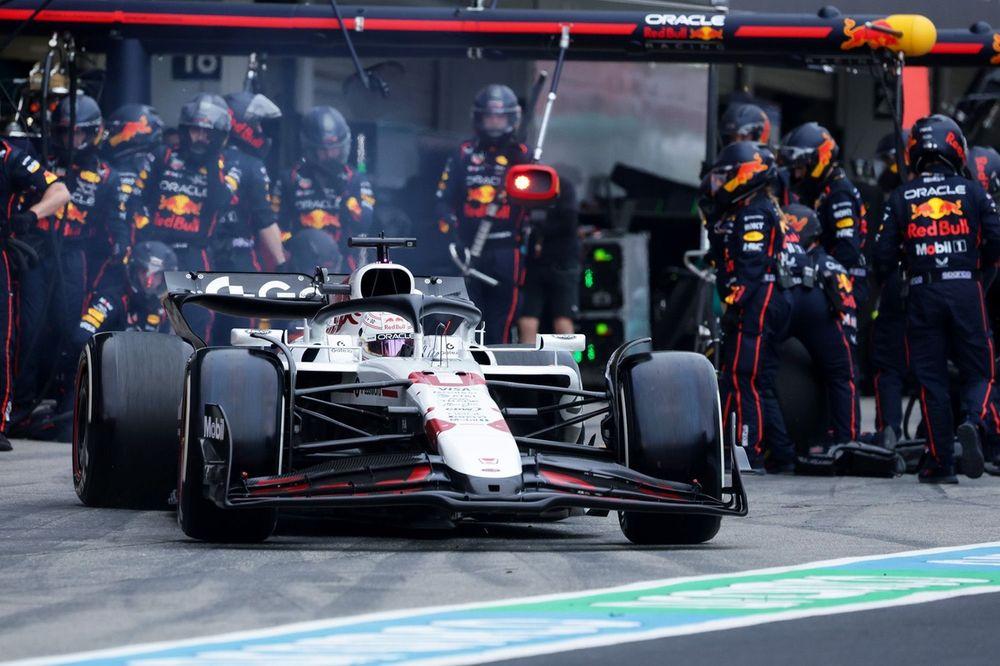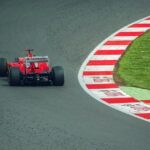Title: Why Mandatory Pitstops Won’t Improve F1 Racing
In the world of Formula 1, where speed, strategy, and technological innovation collide, the debate over the potential implementation of mandatory pitstops has gained traction among fans, teams, and pundits alike. Proponents argue that enforced stops would enhance strategic diversity and increase overtaking opportunities, possibly leading to a more thrilling spectacle on the track. However, a closer examination reveals that imposing such regulations may instead undermine the very essence of F1 racing. As teams meticulously strategize tire management and fuel loads, introducing mandatory pitstops risks diluting the sport’s intrinsic competitive dynamics. Wiht the backdrop of the 2023 season and its evolving narratives, this article delves into the reasons why forced pitstops may not deliver the improvements some are envisioning, and what this could mean for the future of one of motorsport’s most prestigious arenas.
The Flaws in the Concept of Mandatory Pitstops and Their Impact on Race Dynamics
The debate surrounding mandatory pitstops in Formula 1 has garnered considerable attention, yet its purported benefits often overlook several critical factors that shape race dynamics. While the intent behind such regulations aims to create strategic diversity, they may inadvertently constrain the natural ebb and flow of racing. For instance, when teams are compelled to pit at predetermined intervals, it eliminates the vital aspect of strategy that allows teams to play to their strengths, be it tire conservation, fuel management, or optimizing track position. This leads to a more predictable race where overtaking opportunities may diminish as drivers merely follow the scripted sequence of stops rather than adapt to real-time developments on the track.
Moreover, imposing mandatory pitstops could skew competition by overly favoring teams with better pit crew efficiency and faster tire change technologies.This may result in less seasoned teams being left behind, creating a continuous cycle of advantage that doesn’t necessarily reflect pure racing talent or innovation. The risk lies in a homogenized competition, where the drama and unpredictability inherent in motorsport could be diluted. Consider the following implications of such regulations:
- Reduced Strategy: Teams may adopt uniform pit strategies, minimizing critical decision-making moments.
- limited Overtaking: A fixed pit timeline may reduce opportunities for on-track battles,which are frequently enough a highlight of the sport.
- Competitive Disparity: Wealthier teams may exploit pitstop technology, further widening the gap between frontrunners and backmarkers.
In essence, rather than enhancing the spectacle of Formula 1, mandatory pitstops could homogenize the experience, robbing spectators of the thrilling nuance that comes from witnessing teams’ strategic gambits unfold naturally throughout a race. This consideration prompts the need for ongoing dialog among stakeholders to ensure that the sport remains as dynamic and engaging as ever.
Analyzing the Unintended Consequences of Forced Strategy Changes in F1 Racing
The decision to enforce mandatory pitstops in Formula 1 could unravel the intricate strategies that teams have honed over decades. While the intention behind such a move might be to enhance racing dynamics, it has the potential to strip the sport of its tactical depth, leading to predictable outcomes. The effect of this could culminate in several unintended consequences,including:
- Reduced Strategy Variation: Teams are likely to develop a standardized approach to racing,negating the creative tactics that frequently enough lead to thrilling on-track battles.
- Increased Dependence on Team Decisions: Drivers would have less autonomy, turning races into a series of pre-determined outcomes dictated by team strategy rather than individual skill.
- Fan Discontent: Enthusiasts may become disillusioned with races that lack the surprise elements,diminishing the overall excitement and engagement with the sport.
Additionally, altering the foundational aspects of race strategy could result in unforeseen competitive disparities among teams. A simplified structure could disproportionately benefit those with deeper resources, widening the performance gap rather of bridging it. Consider the following potential ramifications for team performance in a hypothetical mandatory pitstop scenario:
| Team | Current Strategy Flexibility | Projected Performance Impact |
|---|---|---|
| Team A | High | Minimal |
| Team B | Moderate | Negative |
| Team C | Low | Significant |
This analysis suggests that while mandatory pitstops may aim to level the playing field, they could inadvertently hinder competition by stripping teams of their unique strategic advantages. Rethinking such regulations requires an understanding of the delicate ecosystem that drives F1 racing, emphasizing the importance of preserving the art of strategy in motorsport.
Recommendations for Enhancing Competition Without imposing pitstop Regulations
To foster a more competitive atmosphere in formula 1 without resorting to mandatory pitstops,several strategic approaches can be considered. Enhancing the performance balancing measures can introduce a level playing field, ensuring that no team enjoys an unwarranted advantage.This can include:
- adjusted Aerodynamics: Implementing flexible aerodynamic regulations to allow teams to innovate while maintaining competitive standards.
- Power Unit Equality: Establishing guidelines for engine manufacturers to ensure performance is closely matched across the board.
- Increased Points for Top Finishers: Offer more points progressively for top placements to incentivize teams to strive harder for podium finishes.
Additionally, leveraging technology to enhance fan engagement and real-time data analysis can create a closer connection between teams and spectators.this can be achieved through:
- real-Time Telemetry: Broadcasting detailed telemetry of car performance, which not only informs fans but encourages teams to push their limits in response to competition.
- Strategic DRS Zones: Varied DRS activation points that change during a race can add an element of unpredictability and teamwork strategy.
- Fan Engagement Platforms: Initiating platforms where the audience can vote on certain race strategies,creating a unique interactive element to the race experience.
In Summary
while the introduction of mandatory pitstops in Formula 1 may seem like a promising strategy to enhance the excitement and unpredictability of races, the evidence suggests otherwise. The complexities of tire management, team strategy, and driver skill already create a dynamic racing environment that keeps fans on the edge of their seats. Rather than imposing rigid regulations that could stifle innovation and competitive spirit, stakeholders in the F1 community might better serve the sport by focusing on the refinement of existing rules and technologies that promote natural racing dynamics. As teams and drivers continue to navigate the challenges of the modern track, the essence of what makes Formula 1 thrilling lies not in enforced mandates but in the unpredictable interplay of strategy, skill, and speed. Ultimately, the future of F1 will depend on a balanced approach that embraces the sport’s heritage while paving the way for innovation, rather than dictating the terms of competition.










